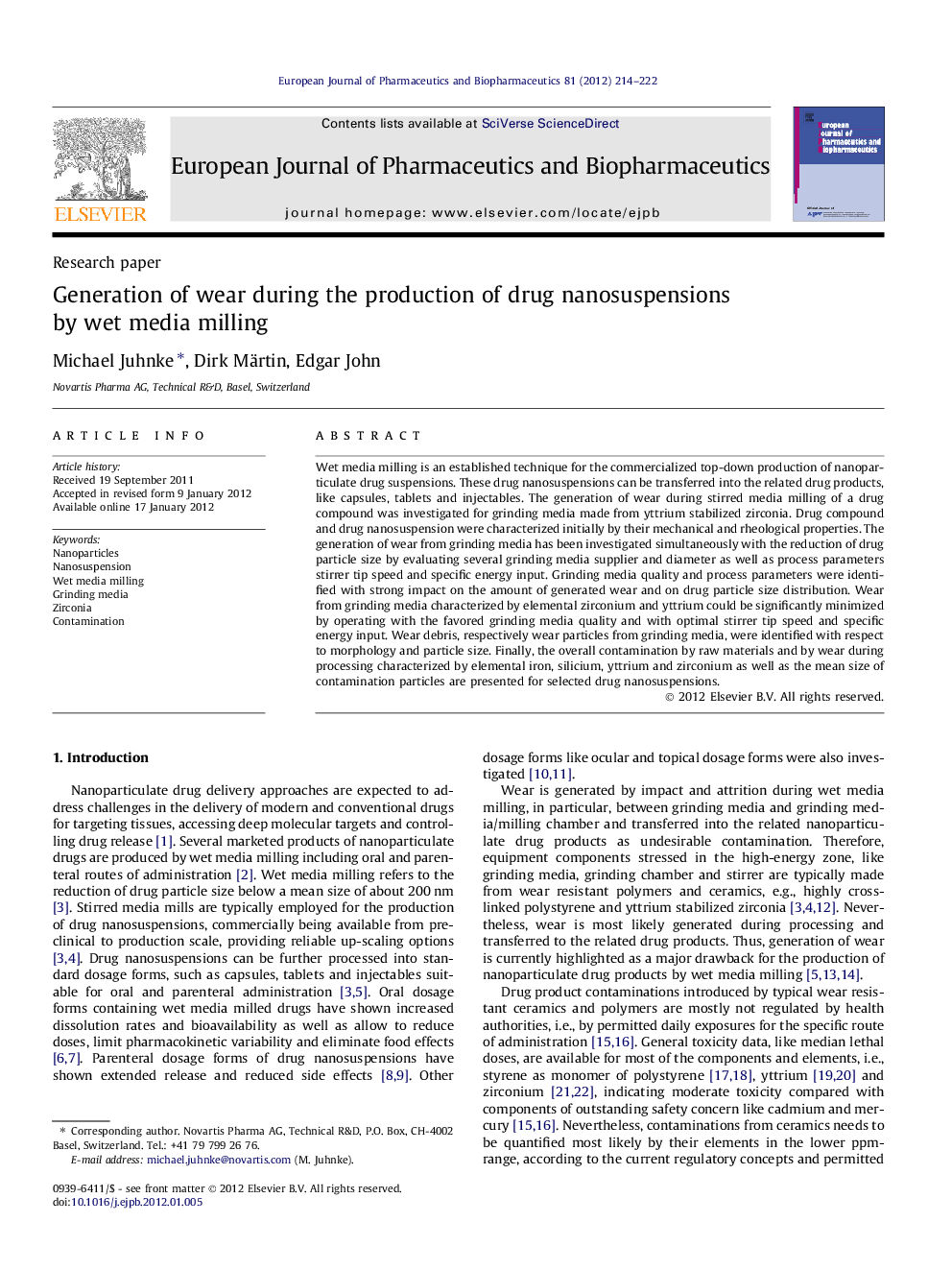| Article ID | Journal | Published Year | Pages | File Type |
|---|---|---|---|---|
| 2083781 | European Journal of Pharmaceutics and Biopharmaceutics | 2012 | 9 Pages |
Wet media milling is an established technique for the commercialized top-down production of nanoparticulate drug suspensions. These drug nanosuspensions can be transferred into the related drug products, like capsules, tablets and injectables. The generation of wear during stirred media milling of a drug compound was investigated for grinding media made from yttrium stabilized zirconia. Drug compound and drug nanosuspension were characterized initially by their mechanical and rheological properties. The generation of wear from grinding media has been investigated simultaneously with the reduction of drug particle size by evaluating several grinding media supplier and diameter as well as process parameters stirrer tip speed and specific energy input. Grinding media quality and process parameters were identified with strong impact on the amount of generated wear and on drug particle size distribution. Wear from grinding media characterized by elemental zirconium and yttrium could be significantly minimized by operating with the favored grinding media quality and with optimal stirrer tip speed and specific energy input. Wear debris, respectively wear particles from grinding media, were identified with respect to morphology and particle size. Finally, the overall contamination by raw materials and by wear during processing characterized by elemental iron, silicium, yttrium and zirconium as well as the mean size of contamination particles are presented for selected drug nanosuspensions.
Graphical abstractZirconia particle introduced into the drug nanosuspension during wet media milling by wear from grinding media.Figure optionsDownload full-size imageDownload high-quality image (65 K)Download as PowerPoint slide
